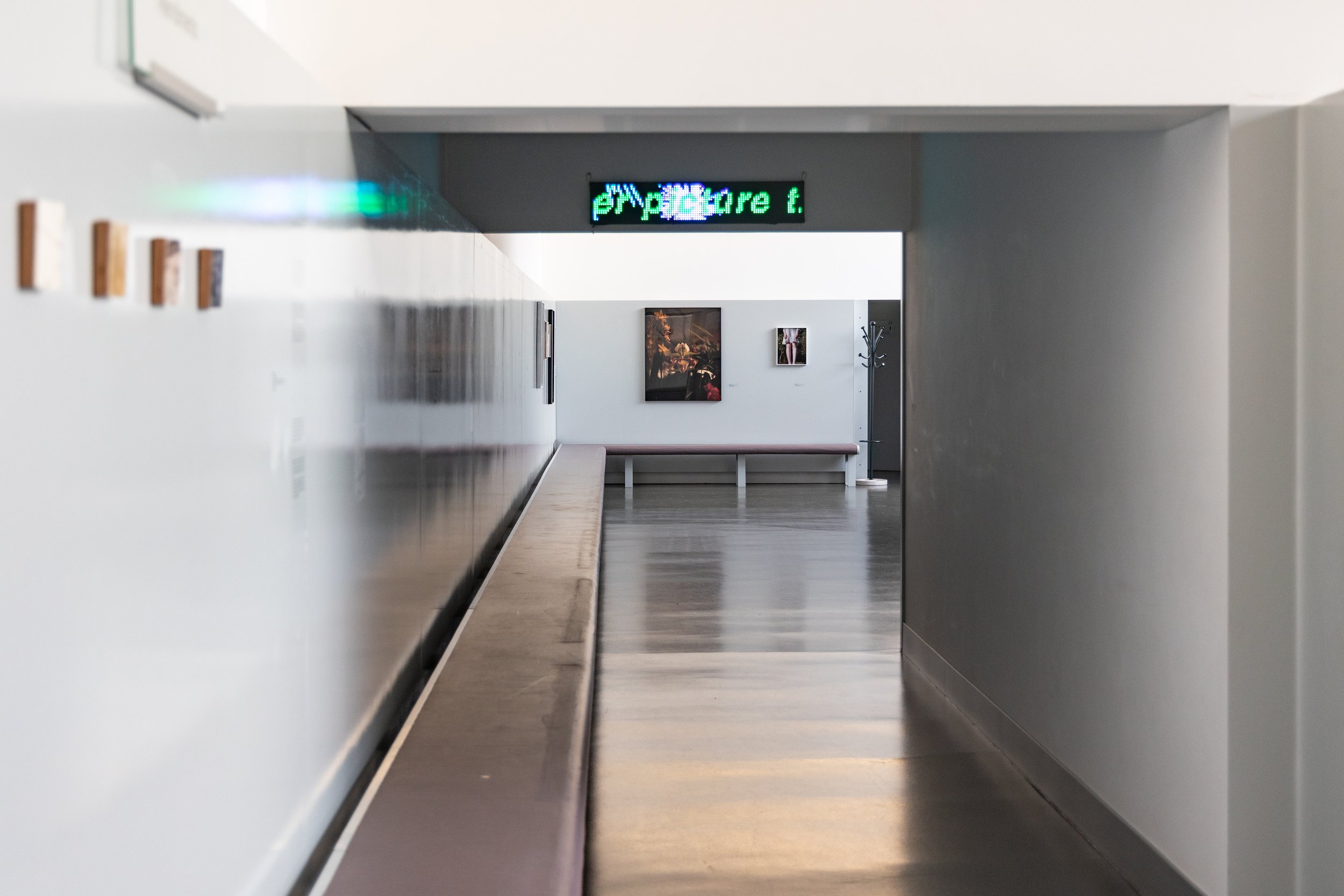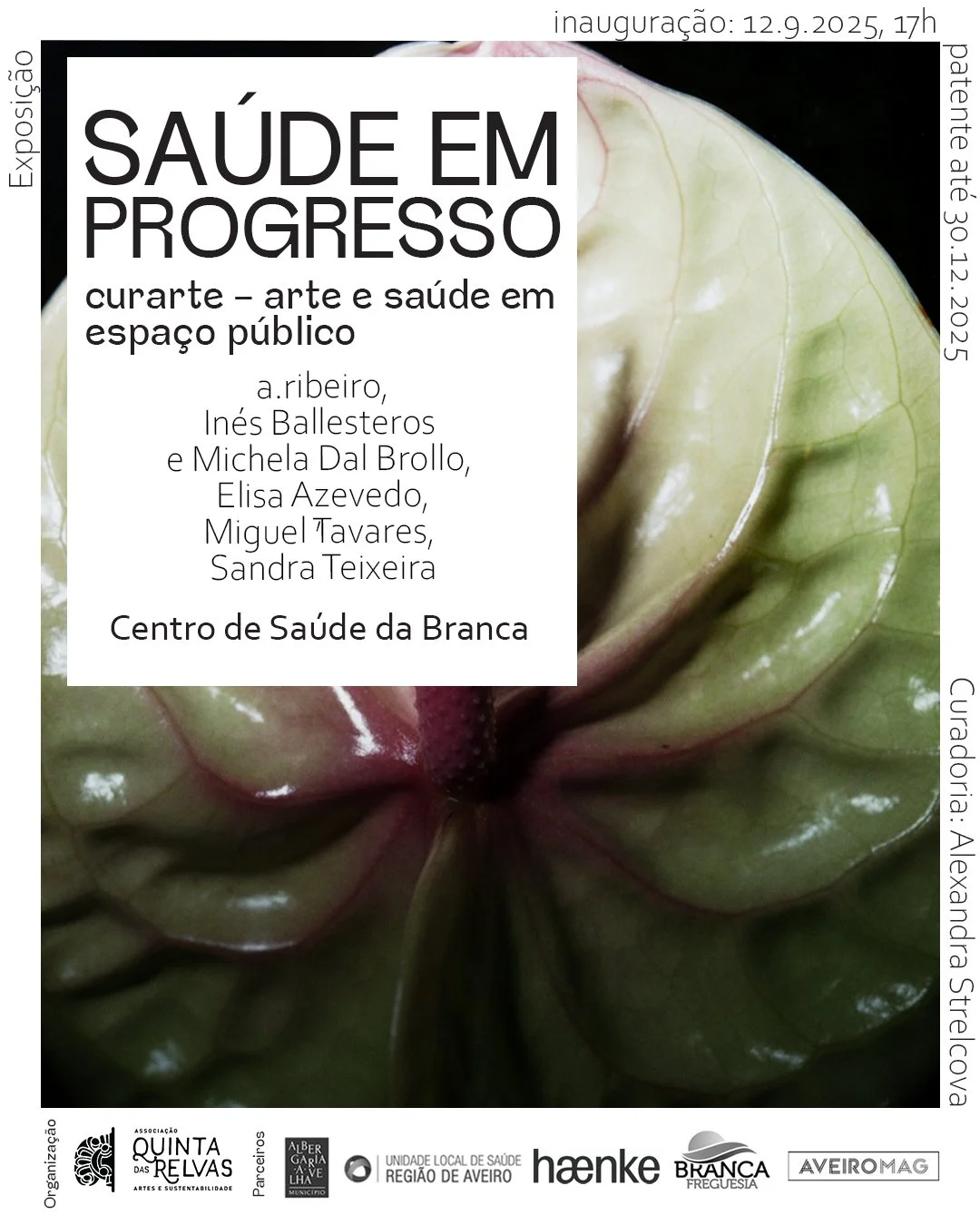Curarte: Health in Progress
© Sandra Teixeira
“Health in Progress” is an exhibition developed within Curarte, a programme exploring the role of art in public health contexts, curated by Sasha Strelec.
Bringing together works by a.ribeiro, Inés Ballesteros & Michaela Dal Brollo, Elisa Azevedo, Miguel Tavares, and Sandra Teixeira, the project reflects on care, community, and the everyday environments in which health is shaped and experienced.
Coordinated by Associação Quinta das Relvas, in collaboration with the Municipality of Albergaria-a-Velha and UCSP,, the exhibition is currently on view at the Branca Health Center until 30 December 2025.
We come to a health centre to seek cure, yet in the market economies of today, treatment or medicine does not necessarily equal cure as such. After all, the state of healthcare increasingly mirrors the ailments of late-capitalist society in the nature of disease itself: air pollution may trigger respiratory infections, harmful lifestyle habits contribute to chronic disease, plastic pollution has infiltrated everything from glaciers to human embryos, and intensive agriculture—developed to feed the planet—has degraded soils only to enrich a few. Economies addicted to fossil fuels accelerate biodiversity loss and intensify climate collapse, which continues to devour the planet and all its inhabitants.
A recent study suggests that in just two centuries, human connection to nature has diminished by 60%. Ironically, in the Iberian Peninsula this void seems to have provoked a violent response from nature itself: last summer, wildfires reached the edges of this town; this year, flames have broken yet another new record all across the region. Nature is not absent here but hyper-present—extraction-ready, combustible, demanding attention in ways that are destructive and ingenious at once.
It is within this landscape—where ecological precarity mirrors the struggles of a generation—that this exhibition asks: what does it mean to create and sustain health, both personal and collective, in an era of decline? To approach this question, we invited five young artists from Portugal and Spain to present works that explore the notion of health—whether individual, societal, or planetary.
The selected works engage with human–plant relationships, material cultures, digital landscapes, and precarious futures in which interspecies collaboration becomes a necessity rather than a niche. As we wait for cures to our longstanding afflictions, may these works stand as a testament to our lost connection with nature—and ignite a longing to restore it.
Elisa Azavedo
Plants remind us that embodiment is never strictly human. As Emanuele Coccia notes, a flower is nothing less than a plant’s sexual organ, an invitation to other species to participate in its reproduction. These interspecies entanglements are not only metaphorical but material: our breath, our diets, our economies are already symbiotic. In this light, acknowledging humans as part of natural ecosystems—rather than above or apart from them—is less an act of stewardship than a recognition of the reciprocal ways plants care for us.
Miguel Tavares
Indigenous communities worldwide rely on their healers as the bearers of locally informed, medicinal knowledge, often tested and transmitted through generations. In remote areas where access to (Western) healthcare is scarce, healers also serve as the first contact point for those who fall ill. In the digital age, and as our own healthcare systems decompose, seeking help online may equally seem a more immediate solution. Except that you never quite know who may answer your call.
Inés Ballesteros
An average human will now identify major commercial brands more easily than plants that grow in their neighbourhood. But what if a better knowledge of our other-than-human coinhabitants on this planet could actually improve our chances of survival? Foraging plants and mushrooms may prove handy when prices spike and healthy food is scarcely available. Fermenting is equally a political act: a form of resistance against social inequalities, an alternative economy of care for futures rooted in collective resilience.
Sandra Teixeira
Saponins, tannins, flavonoids—plant molecules alter the way they interact with the world. But photography is chemistry, too: emulsions responding to photons, silver salts darkening in reaction. When plant-based developers or dyes replace industrial chemicals, the image transforms into an interspecies collaboration. Molecules become its co-authors, with every image carrying the imprint of this more-than-human labour. The photograph is no longer a human artefact imposed upon inert matter but an assemblage of agencies.
Ana Sofía Ribeiro
Invasive species are often cast as intruders—blamed for draining water, fuelling fires, and threatening local ecosystems. Yet their spread is itself the product of human choices and interventions. The language we use to condemn plants uncannily mirrors the language applied to people. How do we make space for newcomers while safeguarding long-held traditions? Increasingly, this rhetoric becomes unsettlingly familiar and shows that belonging and exclusion can prove as combustible as the landscapes we inhabit.










